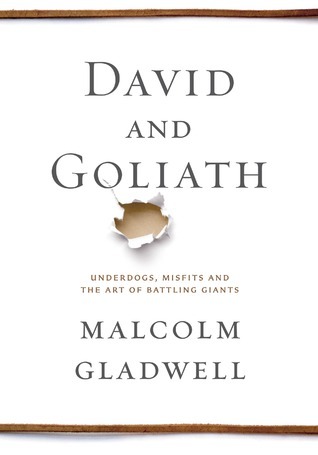
David and Goliath: Underdogs, Misfits, and the Art of Battling Giants
Book Description
What if the greatest victories come from the most unexpected places? In "David and Goliath," Malcolm Gladwell peels back the layers of perceived disadvantages, revealing how underdogs and misfits turn the tables against seemingly insurmountable giants. This exhilarating exploration dives deep into the battles fought not just on the battlefield, but in classrooms, communities, and personal struggles. Each page unravels the potential hidden in adversity and challenges conventional wisdom about power and success. Can the underdog’s grit and resourcefulness truly reshape the landscape of competition? Get ready to question everything you thought you knew about strength and vulnerability.
Quick Book Summary
"David and Goliath: Underdogs, Misfits, and the Art of Battling Giants" by Malcolm Gladwell challenges the traditional notions of advantage and disadvantage. Through a series of engaging stories and case studies—from biblical showdowns to modern legal battles—Gladwell explores how those who appear weaker or less privileged often possess hidden sources of strength. He examines how adversity can cultivate resilience, creativity, and unconventional tactics, leading underdogs to unexpected triumphs. Gladwell also discusses the complexity of power, suggesting that too much leverage or authority can become a liability, while perceived weaknesses may contain unexpected benefits. The book ultimately urges readers to rethink how society defines success, power, and the true nature of advantage.
Summary of Key Ideas
Table of Contents
Perceived Disadvantages Can Be Advantages
Malcolm Gladwell opens with the classic story of David and Goliath to challenge commonly held assumptions about strength and weakness. Rather than viewing David’s victory as miraculous, Gladwell reframes it as a case where the supposed underdog capitalized on unique advantages—his agility, use of unconventional weapons, and ingenuity. Through this lens, apparent disadvantages often carry overlooked benefits, allowing individuals to approach problems from different perspectives and catch giants off-guard.
The Limits of Power and Authority
Gladwell delves into the concept that possessing too much power or advantage can, paradoxically, become a weakness. Through examples in education and conflict, he illustrates how authority figures or institutions that wield excessive control may lose touch with those they lead, provoking resistance or fostering complacency. Real-world narratives, such as the civil rights movement and police confrontations, highlight how those in power often underestimate the determination and creativity of underdogs.
Adversity Breeds Resilience and Innovation
The book consistently demonstrates how adversity fosters resilience, resourcefulness, and innovation among those facing challenges. Gladwell tells stories of students with learning differences who develop compensatory skills, families coping with loss who discover deeper empathy, and entire communities that rally to overcome obstacles. These trials, rather than simply being hurdles, shape stronger and more adaptive individuals.
Unconventional Tactics and Perspectives
A key recurring theme is the effectiveness of unconventional tactics. Gladwell explores how underdogs, unbound by traditional rules or expectations, can employ creative strategies that giants either dismiss or fail to anticipate. From the innovative basketball techniques used by underdog teams to the legal maneuvers of unlikely activists, these approaches often transform seemingly hopeless situations into victories. Such tactics reframe the field of battle and turn perceived disadvantages into strategic assets.
Rethinking Success and Strength
Concluding, Gladwell emphasizes that true strength does not always reside with the powerful, nor does victory solely belong to the traditionally advantaged. Success, he argues, requires a nuanced understanding of challenge and capacity—the willingness to see possibilities where others see limitations. By analyzing the dynamics between underdogs and giants, Gladwell encourages readers to re-evaluate their assumptions about what it truly means to win, persevere, and find meaning in adversity.
Download This Summary
Get a free PDF of this summary instantly — no email required.





